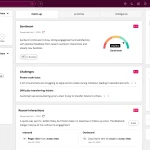
Think about the last great idea your team had. Where did it come from? Probably not from everyone thinking in the exact same way. That’s the power of diversity—and honestly, we’ve only been tapping into part of it. For years, workplace diversity efforts have focused on visible differences. But what about the invisible ones? Like the way our brains are wired.
That’s where neurodiversity comes in. It’s the simple, powerful idea that neurological differences like autism, ADHD, dyslexia, and others are a natural part of human variation. Not defects. Just differences. And when we create a workplace culture that welcomes these different kinds of minds, we don’t just do the right thing. We unlock a staggering amount of potential.
What Exactly is Neurodiversity? Moving Beyond the Buzzword
Let’s get clear on the term. Neurodiversity is a concept and a social movement. It suggests that brain differences are just that—differences. They’re not inherently good or bad. A neurodivergent person simply has a brain that functions in ways that diverge from the dominant societal standards, or what we might call “neurotypical.”
This includes conditions like:
- Autism (or Autism Spectrum Condition)
- Attention Deficit Hyperactivity Disorder (ADHD)
- Dyslexia
- Dyspraxia
- Dyscalculia
- Tourette’s Syndrome
The goal of a neurodiversity inclusion program isn’t to “fix” people. It’s to fix the environment. To remove the barriers that prevent brilliant people from contributing their best work.
The Untapped Goldmine: The Business Case for Neurodiversity
This isn’t just a feel-good HR initiative. The data is seriously compelling. Companies that actively recruit and support neurodivergent talent often find they’ve been sitting on a goldmine of skills they didn’t even know they were missing.
We’re talking about strengths like:
- Pattern recognition and an ability to spot errors others miss.
- Hyper-focus and deep, sustained concentration on complex tasks.
- Creativity and innovative, non-linear problem-solving.
- Loyalty and retention—when neurodivergent employees find a supportive environment, they tend to stay.
A study from JPMorgan Chase found that professionals in its Autism at Work program were 48% faster and up to 92% more productive than their neurotypical peers in certain roles. That’s not a minor improvement. That’s a complete game-changer.
Building the Foundation: Key Pillars of an Effective Program
Okay, so you’re convinced. But how do you actually build a neurodiversity inclusion program that works? It’s more than just putting up a poster. It requires a fundamental shift in your people processes. Here’s the deal.
1. Rethink Your Recruitment and Hiring
The traditional job interview is, frankly, a nightmare for many neurodivergent people. It’s a high-pressure social performance test that often has little to do with the actual job skills. To build a more neuroinclusive hiring process, you can:
- Offer clear, detailed information about the interview process beforehand.
- Provide interview questions in advance.
- Focus on skills-based assessments or work samples instead of abstract questions.
- Allow candidates to use assistive technology or have a support person.
2. Cultivate an Environment of Psychological Safety
This is huge. Neurodivergent employees need to feel safe to be themselves, to ask for what they need, and to not fear judgment for their differences. This means leadership must actively champion neurodiversity. It means training managers to lead with empathy and flexibility. And it means fostering a culture where “masking”—the exhausting act of hiding one’s neurodivergent traits to fit in—isn’t a requirement for survival.
3. Implement Tailored Supports and Accommodations
Accommodations aren’t special treatment. They’re just leveling the playing field. And often, they’re low-cost or even free. Think of it like this: you wouldn’t expect someone who uses a wheelchair to just “get over” the stairs. You’d install a ramp. The same logic applies here.
Common, effective accommodations include:
| Accommodation Type | Examples |
| Sensory | Noise-cancelling headphones, adjustable lighting, access to a quiet room |
| Communication | Written instructions, clear agendas for meetings, access to speech-to-text software |
| Work Structure | Flexible schedules, option for remote work, clear task prioritization |
The Human Impact: Beyond the Bottom Line
Sure, the productivity stats are impressive. But the real story is the human one. Imagine a brilliant coder with autism who couldn’t get past a grueling group interview. Or a marketing strategist with ADHD whose chaotic creativity was stifled by a rigid, 9-to-5 desk policy.
When you build a culture that includes them, you’re not just filling a quota. You’re giving people a chance to build a career, to contribute meaningfully, to feel like they truly belong. That kind of impact… well, it reverberates. It changes lives. And it fundamentally transforms your company’s soul for the better.
A Few Final Thoughts
Building a neurodiversity inclusion program isn’t a one-and-done project. It’s a continuous journey of listening, learning, and adapting. You’ll make mistakes. That’s okay. The key is to start. To have the conversations. To ask your neurodivergent employees what they need—and then, crucially, to act on it.
The future of work isn’t about making everyone the same. It’s about creating a space where every kind of mind can thrive. Because the next big breakthrough for your company might be locked inside a brain that simply sees the world a little differently.





